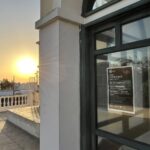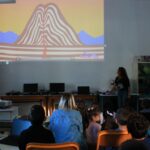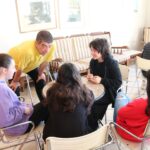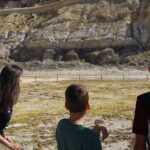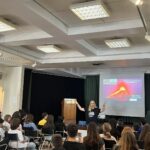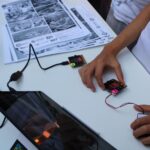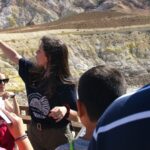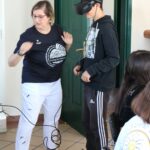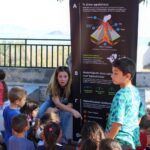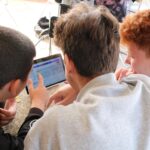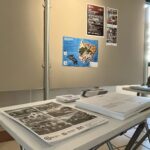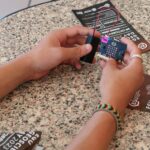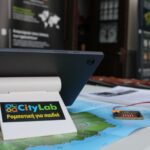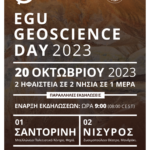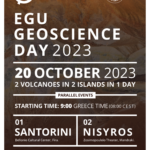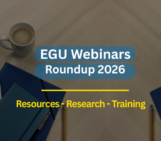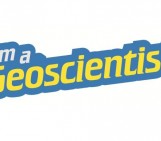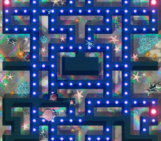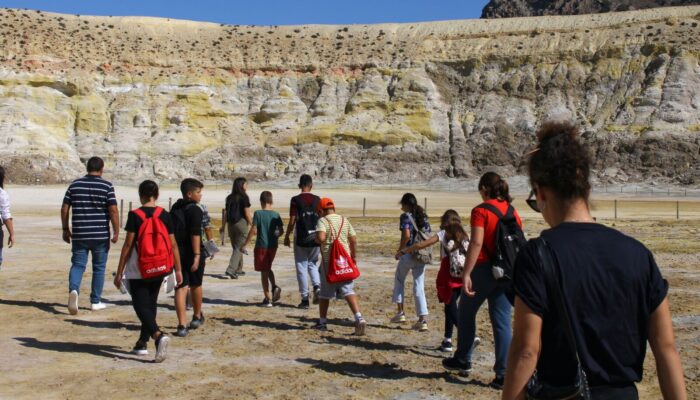
In 2023, Evi Nomikou, Associate Professor in the Department of Geology and Geoenvironment, National and Kapodistrian University of Athens and her team (Varvara Antoniou, Bejelou Konstantina, Efrosini Varotsou, Sotiria Kothri, Elisavet Nikoli, Stavroula Kazana, Areti Belk and Anna Andri), hosted the third annual EGU Geoscience Day, simultaneously on two Greek volcanic islands: Santorini and Nisyros. The event was a masterpiece of parallel scheduling and was described by the Nisyros Geopark as “a great success”. We asked Evi to share her experience of running an EGU Geoscience Day.
The “EGU Geoscience Day” serves the vital purpose of fostering awareness in Earth, planetary and space sciences among school students, the broader public, policy makers and journalists. In this regard the “EGU Geoscience Day 2023” successfully took place on October 20th, 2023 simultaneously on two volcanic islands of immense scientific as well as historic significance in Greece, Santorini (Bellonio Cultural Center, Fira) and Nisyros (Zosimopouleio Theater, Mandraki). The event, organized by the Scientific team of the Laboratory of Physical Geography at the Department of Geology and Geoenvironment of the National and Kapodistrian University of Athens, in partnership with esteemed collaborators such as the Hellenic UNESCO Associated Schools Network (ASPnet), City Lab (STEM education), the Municipality of Thira, and the Municipality of Nisyros, was generously funded by the European Geoscience Union (EGU).
At least 200 students from the Vocational High School and High School of Thira in Santorini and 60 students from the Primary School of Mandraki in Nisyros were immersed in educational activities designed to help them unravel the geological history of the two most active volcanic complexes in Greece, while also being informed about potential volcanic geohazards and the significance of volcano monitoring. In Santorini, the students were treated to a captivating lecture that concluded with special reference to the necessity and monitoring techniques of the underwater volcano Kolumbo through the underwater observatory SANTORY. The engagement of the student audience was encouraged through interactive knowledge games, including completing a crossword to grasp the main concepts of volcanology and also finding the keywords that contributed to the creation of the AI generated comics.
To further enhance the learning experience, virtual guides such as the Santorini and Nisyros Volcano apps were introduced, offering simplified scientific material, including 2D and 3D maps, 360° panoramas, and drone footage showcasing the geodiversity of the area. Utilizing Oculus Headsets, students had the unique opportunity to embark on a virtual exploration of volcanic morphology. The day’s enrichment continued with an interactive on-site visit in Santorini’s caldera as well as the active hydrothermal field of Nisyros’ volcano, complemented by additional printed materials, including leaflets, maps, and interpretative panoramas distributed during the activities, fostering stimulating conversations among students and educators.
As a geoscientist participating in the event, it was inspiring to witness the enthusiasm and curiosity of the students as they delved into the captivating world of geoscience.
Read Evi’s interview with Gillian D’Souza about planning the event, here.
Photos from the event:
- Image credit: Evi Nomikou
- Image credit: Nisyros Geopark.
- Image credit: Evi Nomikou
- Image credit: Nisyros Geopark.
- Image credit: Evi Nomikou
- Image credit: Nisyros Geopark.
- Image credit: Nisyros Geopark.
- Image credit: Evi Nomikou
- Image credit: Nisyros Geopark.
- Image credit: Evi Nomikou
- Image credit: Evi Nomikou
- Image credit: Evi Nomikou
- Image credit: Nisyros Geopark.

